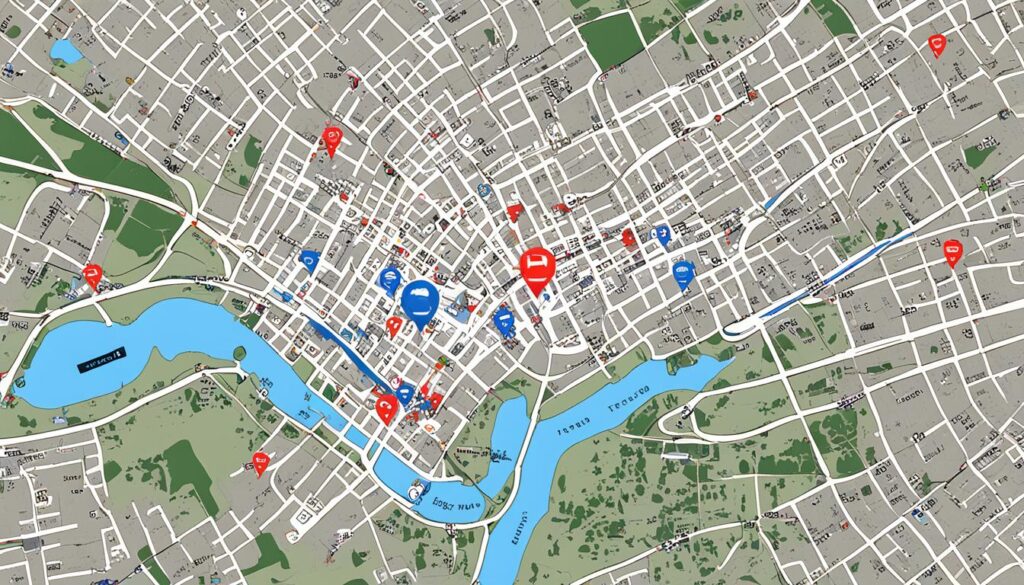Check the Current Local Time in Austin
Have you wondered what time it is in Austin, Texas, now? It’s useful when planning a trip or scheduling a meeting. It keeps you in sync with local time.
Austin is in Texas’s heart, in the Central Time Zone. It switches between Central Daylight Time and Central Standard Time. It’s important for residents and visitors due to its vibrant culture and economy.
Are you set to see what time it is in Austin? Align your schedule with it today.
Key Takeaways
- Austin switches between Central Daylight Time in summer and Central Standard Time in winter.
- Knowing Austin’s time is key for locals, tourists, and business people.
- It helps in planning your day and meetings efficiently.
- The city’s weather and culture might affect your plans.
- Remember local holidays like Juneteenth on June 19.
Understanding Austin’s Time Zone
Austin, Texas, follows the Central Time Zone, observing unique time patterns year-round. We’ll explore the austin time zone specifics. We’ll cover Central Standard Time and Central Daylight Time, plus how these influence Austin’s sync with the world.
Central Standard Time (CST)
In fall and winter, Austin uses Central Standard Time (CST). CST is six hours behind Coordinated Universal Time (UTC−6). This aligns Austin’s days with daylight hours, using natural light well in the shorter days.
Central Daylight Time (CDT)
With Daylight Saving Time, Austin switches to Central Daylight Time (CDT) from March to November. CDT sets Austin five hours behind Coordinated Universal Time (UTC−5). This shift gives people more daylight in evenings, saving energy and bettering evening activities.
Time Difference and GMT Offset
The austin time difference to Greenwich Mean Time (GMT) changes seasonally. During CST, GMT offset is minus six hours. It shifts to minus five hours during CDT. Knowing these changes is key for planning, especially in business or for events like South by Southwest (SXSW).
Austin What Time Is It In
When you ask, what time is it in Austin, remember that the city follows Central Daylight Time (CDT) from March to November. Then it switches to Central Standard Time (CST) for the other months. This knowledge is key for planning anything from work meetings to fun gatherings.

Austin is always buzzing with events that depend on the local time. For example, bat watching tours start before sunset, which changes with the seasons. Places like Franklin Barbecue also have specific hours. Even the city’s location at 30°16’N / 97°45’W is tied to its time zone.
Here’s more detailed information on bat watching in Austin:
| Tour Operator | Price for Adults | Price for Seniors | Price for Kids (3-12) | Additional Info |
|---|---|---|---|---|
| Capital Cruises Bat Watching Tours | $13.00 | $10.00 | $8.00 | Operating hours vary |
| Lone Star Riverboats Bat Watching Tours | $13.00 | $11.00 | $8.00 | Free for kids under 2 |
| Live Love Paddle Kayak Bat Watching Tours | $55-$60 | – | – | Weight limits apply |
Understanding what time is it in Austin also helps with transport plans, especially around the Bat Bridge. This area might have special parking fees. Knowing the time is essential for following safety rules for bikes and scooters near the bats.
Austin’s Congress Avenue bridge shelters about 1.5 million Mexican free-tail bats. They are here from March to October, with around 100,000 staying all year. To catch this amazing view, use accurate Austin time zone tools. These tools will consider both CDT and CST times.
Daylight Saving Time Changes in Austin
Daylight Saving Time in Austin means changing clocks twice a year. It keeps our schedules and business operations on track.
Spring Forward: March 10, 2024
On March 10, 2024, Austin will set clocks one hour ahead. This lets people enjoy longer evenings. Though it may disrupt sleep at first, most find the extra daylight after work worth it.

Fall Back: November 3, 2024
The Fall Back happens on November 3, 2024, in Austin. We’ll turn clocks back an hour to standard time. This shift gives us an extra hour of sleep but means shorter days and earlier nightfalls.
| Date | Event | Time Change |
|---|---|---|
| March 10, 2024 | Spring Forward | +1 hour |
| November 3, 2024 | Fall Back | -1 hour |
There’s a bill in the U.S. Senate to keep Daylight Saving Time all year. If passed, it would end the need for switching clocks in Austin. Until then, we’ll keep adjusting our clocks each Spring and Fall.
Current Local Conditions in Austin
The austin weather is always changing. Right now, the weather shows a comfortable 74°F but with rain. The north wind is blowing at 11 mph. Humidity is very high, almost 98%. This weather affects what people do every day, like how they dress or if they go outside.

Recently, Tropical Storm Alberto brought a lot of rain to Central Texas. Some places got up to 2 inches of rain. Luckily, Austin didn’t get hit too hard because the storm went another way. Even though it got pretty cool, up to 83°F, it’s going to get hotter soon, even into the upper 90s. Also, we’re expecting some thunderstorms with a 40% chance of rain on Thursday, dropping to 20% by Friday.
- Wednesday: No rain, temperature range 74° – 75°
- Thursday: Scattered Thunderstorms 40%, temperature range 90° – 75°
- Friday: Isolated Thunderstorms 20%, temperature range 92° – 74°
- Saturday: Sun and Scattered Clouds 0%, temperature range 94° – 75°
- Sunday: Few Clouds, Isolated Storm 10%, temperature range 95° – 77°
- Monday: Sun and Clouds, Isolated Storm 10%, temperature range 96° – 78°
- Tuesday: Sun and Clouds, Isolated Storm 10%, temperature range 97° – 78°
Knowing the weather hour by hour helps people plan their day. Especially when heavy rain might come. Let’s look at the forecast:
| Time | Condition | Rain Percentage |
|---|---|---|
| 9 PM | Rain | 80% |
| 10 PM | Rain | 70% |
| 11 PM | Rain | 50% |
| 12 AM | Showers | 40% |
| 1 AM | Scattered Showers | 30% |
Some parts of Austin might get 1 to 2 inches of rain, especially in the south. Even more, like over 5 inches could fall along the Texas coast. It’s important to keep up with the austin local conditions for safety and to plan.
Popular Tools for Time Management in Austin
Austin uses various tools for time management, suiting its vibrant population. These time management tools boost productivity and efficiency. This is crucial during Daylight Saving Time changes. Here, we explore popular tools for managing time effectively in Austin.

Meeting Planner
The Meeting Planner Austin tool is great for those arranging meetings across time zones. It finds the best times for everyone, making communication smooth. Tools like Toggl work well with Asana, Zapier, and Jira. They keep tasks aligned, which is key for Austin’s businesses to stay productive.
Time Zone Converter
Knowing the time difference between Austin and other places is key, especially for global businesses or individuals. A time zone converter simplifies this, preventing mistakes in scheduling. With tools like Hubstaff, managing teams, both in-office and remote, becomes easier. It ensures everyone is in sync, no matter their location.
Event Time Announcer
It’s vital to announce events at the right time for community engagement. An event time announcer helps share local event times globally. Project tools like Scoro, which include Gantt charts, help track progress and profitability. This ensures events are well planned and on time. It’s crucial for maintaining punctuality, especially when Daylight Saving Time changes.
To use these tools well, try combining them with methods like the Pomodoro Technique, the 80/20 rule, and Getting Things Done. These approaches help focus on high-impact activities and improve creativity. Together with powerful time management tools, they make managing time in Austin much more effective.
Conclusion
Knowing the local time in Austin and how it works is key for people living or visiting. The use of Central Standard Time (CST) and Central Daylight Time (CDT) organizes daily life and helps in international talks. Remember, switching between these time zones during Daylight Saving Time is important for personal and work plans.
Being up-to-date with Austin’s local time is vital for planning everyday tasks. This city loves being on time. Having good time management tools can boost productivity. This ensures you enjoy Austin to the fullest. Meeting planners, time zone converters, and event announcers are very helpful.
To sum up, knowing Austin’s local time and using time management tools makes life smoother. This is true whether you’re setting up meetings, connecting with global partners, or organizing personal time. Understanding Austin’s time is crucial. Stay on track and make every moment count in this lively city.







